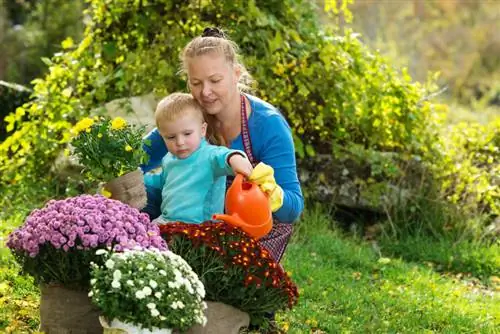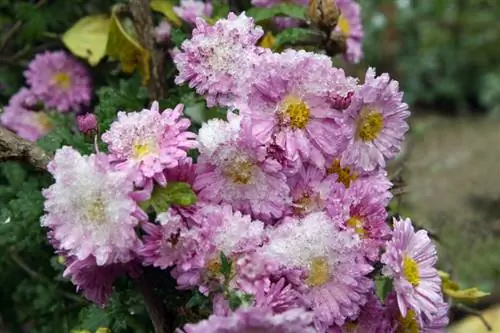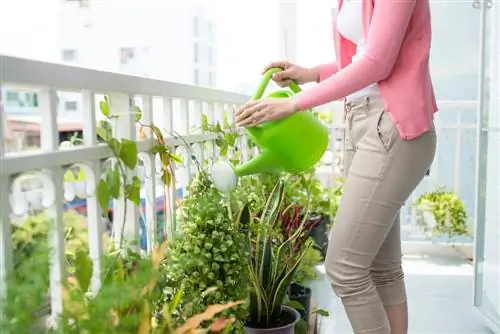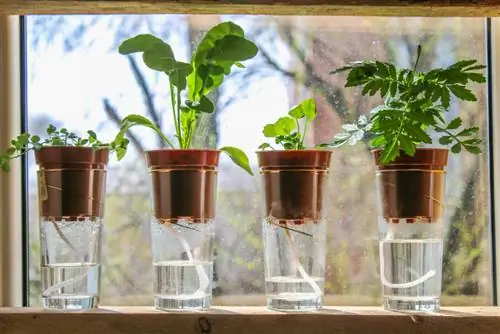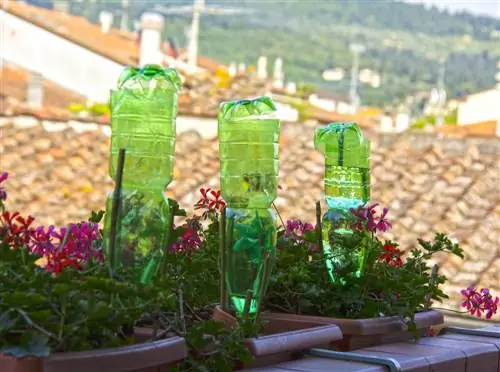- Author admin [email protected].
- Public 2023-12-16 16:46.
- Last modified 2025-01-23 11:20.
Chrysanthemums are so-called heavy feeders and have a high water and nutrient requirement. The substrate should not dry out, but the autumn flowers don't like feet that are too wet either.
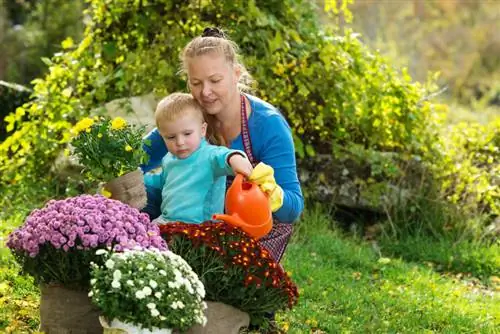
How should you water chrysanthemums correctly?
Chrysanthemums should be planted in well-drained soil and watered at intervals to avoid drying out or overwatering. Check the moisture requirement with a finger test and add small amounts of water several times.
Watering at intervals
Plants rarely die from drought, usually because inexperienced gardeners have literally watered them to death. This even applies to thirsty specimens such as the chrysanthemum, which should under no circumstances be allowed to dry out. Therefore, make sure that the plant is in well-drained soil where excess water can drain away easily. In addition, overwatering can be easily avoided by watering at intervals. It's better to give smaller amounts several times in a row rather than one big gush. You can easily determine whether the plant still needs water by testing it with your finger.
Tips & Tricks
Chrysanthemums, especially when they are grown in pots, often need additional watering even after a rain shower. Due to the dense growth, rainwater cannot always reach the root area, which is why it remains dry.

